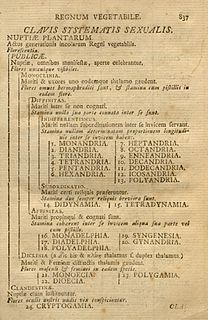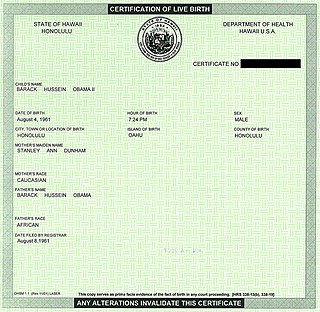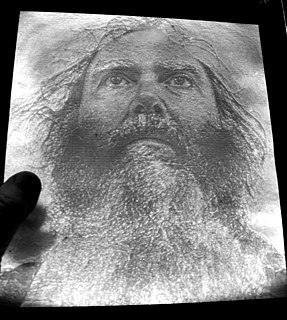
A watermark is an identifying image or pattern in paper that appears as various shades of lightness/darkness when viewed by transmitted light, caused by thickness or density variations in the paper. Watermarks have been used on postage stamps, currency, and other government documents to discourage counterfeiting. There are two main ways of producing watermarks in paper; the dandy roll process, and the more complex cylinder mould process.

Printing is a process for mass reproducing text and images using a master form or template. The earliest non-paper products involving printing include cylinder seals and objects such as the Cyrus Cylinder and the Cylinders of Nabonidus. The earliest known form of printing as applied to paper was woodblock printing, which appeared in China before 220 AD for cloth printing. However, it would not be applied to paper until the seventh century. Later developments in printing technology include the movable type invented by Bi Sheng around 1040 AD and the printing press invented by Johannes Gutenberg in the 15th century. The technology of printing played a key role in the development of the Renaissance and the Scientific Revolution and laid the material basis for the modern knowledge-based economy and the spread of learning to the masses.

Papermaking is the manufacture of paper and cardboard, which are used widely for printing, writing, and packaging, among many other purposes. Today almost all paper is made using industrial machinery, while handmade paper survives as a specialized craft and a medium for artistic expression.

A paper mill is a factory devoted to making paper from vegetable fibres such as wood pulp, old rags, and other ingredients. Prior to the invention and adoption of the Fourdrinier machine and other types of paper machine that use an endless belt, all paper in a paper mill was made by hand, one sheet at a time, by specialized laborers.

Fabriano is a town and comune of Ancona province in the Italian region of the Marche, at 325 metres (1,066 ft) above sea level. It lies in the Esino valley 44 kilometres (27 mi) upstream and southwest of Jesi; and 15 kilometres (9 mi) east-northeast of Fossato di Vico and 36 kilometres (22 mi) east of Gubbio. Its location on the main highway and rail line from Umbria to the Adriatic make it a mid-sized regional center in the Apennines. Fabriano is the headquarters of the giant appliance maker Indesit.
Sizing or size is a substance that is applied to, or incorporated into, other materials—especially papers and textiles—to act as a protective filler or glaze. Sizing is used in papermaking and textile manufacturing to change the absorption and wear characteristics of those materials.

Foolscap folio is paper cut to the size of 8+1⁄2 × 13+1⁄2 in (216 × 343 mm) for printing or to 8 × 13 in (203 × 330 mm) for "normal" writing paper (foolscap). This was a traditional paper size used in some parts of Europe, and the British Commonwealth, before the adoption of the international standard A4 paper; France for instance traditionally used writing/typing paper known as 21-27 until 1967.

Security printing is the field of the printing industry that deals with the printing of items such as banknotes, cheques, passports, tamper-evident labels, security tapes, product authentication, stock certificates, postage stamps and identity cards. The main goal of security printing is to prevent forgery, tampering, or counterfeiting. More recently many of the techniques used to protect these high-value documents have become more available to commercial printers, whether they are using the more traditional offset and flexographic presses or the newer digital platforms. Businesses are protecting their lesser-value documents such as transcripts, coupons and prescription pads by incorporating some of the features listed below to ensure that they cannot be forged or that alteration of the data cannot occur undetected.

A digital watermark is a kind of marker covertly embedded in a noise-tolerant signal such as audio, video or image data. It is typically used to identify ownership of the copyright of such signal. "Watermarking" is the process of hiding digital information in a carrier signal; the hidden information should, but does not need to, contain a relation to the carrier signal. Digital watermarks may be used to verify the authenticity or integrity of the carrier signal or to show the identity of its owners. It is prominently used for tracing copyright infringements and for banknote authentication.

Laid paper is a type of paper having a ribbed texture imparted by the manufacturing process. In the pre-mechanical period of European papermaking, laid paper was the predominant kind of paper produced. Its use, however, diminished in the 19th century, when it was largely supplanted by wove paper. Laid paper is still commonly used by artists as a support for charcoal drawings.

Security paper is a paper used in security printing that incorporates features that can be used to identify or authenticate a document as original, e.g., watermarks or invisible fibres in paper, or features that demonstrate tamper evidence when fraud is attempted, e.g., to remove or alter print such as amounts or signatures on a cheque. Examples of this kind of papers are those used for identification such as passports and certificates, such as birth certificates and different types of academic and qualification certificates, as well as government documents, e.g., voting ballots and tax strips. This also extends to personal and business checks, stock certificates, certificates issued by financial institutions and sensitive government-issued documents. The main use of security paper is to stop people from counterfeiting.
Whatman plc is a Cytiva brand specialising in laboratory filtration products and separation technologies.

The Museum of Papermaking in Duszniki-Zdrój is a historical museum located in the spa town of Duszniki-Zdrój in the Lower Silesia Voivodeship, southwestern Poland. It was founded in 1968 in an old 16th-century paper mill on the Bystrzyca Dusznicka river.
Fedrigoni is a large manufacturer of paper in Italy which owns 5 paper mills in Verona, Arco di Trento, Riva del Garda, Fabriano and Pioraco with a total capacity of 350,000 tonnes/year.
Paper is thin nonwoven material traditionally made from a combination of milled plant and textile fibres. It is primarily used for writing, artwork, and packaging; it is commonly white. The first ancient paper-like plant based sheet to be used for writing and drawing was papyrus in Egypt, The first actual plant-puree-conglomerate based papermaking process was documented in China during the Eastern Han period traditionally attributed to the court official Cai Lun. During the 8th century, Chinese papermaking spread to the Islamic world where Chinese paper being superior; it replaced papyrus, and wood and stone inscriptions, where pulp mills and paper mills were used for papermaking and money making. By the 11th century, papermaking was brought to Europe. By the 13th century, papermaking was refined with paper mills utilizing waterwheels in Spain. Later European improvements to the papermaking process came in the 19th century with the invention of wood-based papers.
Postage stamp paper is the foundation or substrate of the postage stamp to which the ink for the stamp's design is applied to one side and the adhesive is applied to the other. The paper is not only the foundation of the stamp but it has also been incorporated into the stamp's design, has provided security against fraud and has aided in the automation of the postal delivery system.
Allan Henry Stevenson was an American bibliographer specializing in the study of handmade paper and watermarks who "single-handedly created a new field: the bibliographical analysis of paper." Through his pioneering studies of watermarks, Stevenson solved "the most fascinating, and perhaps the most notorious, bibliographical problem of our time," the dating of the Missale Speciale or Constance Missal, an undated incunable believed by many to pre-date the Gutenberg Bible, and possibly to have been the first printed European book. Stevenson proved that the book in fact had been printed nearly twenty years later, in 1473. Through similar analysis of watermarks, he also established that most block books, small religious books in which the text and images were printed from a single woodcut block and which many believed dated from the early 15th century, had in fact been printed after 1460.
Ingres paper is a type of drawing paper. It is a laid finish paper of light to medium weight, and it is not as strong or as durable as Bristol paper. Laid finish refers to the imprint of regular screen pattern of a papermaker's mould. Ingres is not necessarily a handmade paper, but is produced to replicate the properties of laid paper. Ingres is often used for charcoal and pastel drawing. It is also used as an endpaper in books.

A light-and-shade watermark, is a watermark image produced in a chiaroscuro style. In a traditional watermark, an image is produced in paper fibers by contrasting shades of light and dark in places where the paper is made thinner or thicker during the printing process. The resulting image has a high-contrast "black and white" quality with no graduated shading in between. In a chiaroscuro watermark, however, the fibers in the paper run from thin to thick, producing an image with many shades from light to dark. The technique was first developed in 1848 by William Henry Smith as a method to help prevent counterfeiting.

The Paper Museum in Pescia is the only museum in Tuscany that records, documents, protects, and passes down to the public the art of handmade paper. Its purpose is to preserve the ancient art of processing and manufacturing handmade paper, and to raise awareness of the importance and evolution of paper production.














